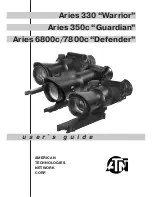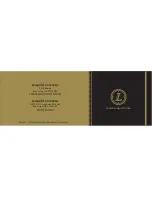
EN
Levenhuk LabZZ TK
Telescopes
Dear friend!
Levenhuk LabZZ TK telescopes will open up the amazing world of exciting scientific discoveries! With the telescope in the kit
you can study the Moon, planets and bright stars, unravel the mysteries of the endless Cosmos and observe the most distant
objects. Your experience with Levenhuk LabZZ TK telescopes will be both informative and entertaining.
Carefully read the entire manual before operating the telescope or microscope. Don't lose it; you might need it later.
Information for parents
Dear adults! Remember that you are responsible for your child at all times. Always ensure the child's safety when working
with the telescope. Read this entire manual carefully, especially the handling and maintenance instructions.
Even if your child is old enough and reads well, repeat all the rules aloud one more time before beginning to work with the
instruments. Make sure that he or she clearly understands these instructions.
CAUTION! CHOKING HAZARD! These devices include small parts. The telescopes are designed for
children over 5 years of age and should only be used under adult supervision.
Telescope's construction
1.
2.
3.
4.
5.
6.
7.
8.
9.
10.
11.
12.
13.
14.
15.
16.
17.
18.
19.
Objective lens
. The most important part of the telescope. The objective is a lens system that gathers light from the
distant object and forms its image. The objective should always be pointed in the direction of the object you want to
observe.
Telescope tube
. Light rays collected by the objective travel down the optical tube to enter the eyepiece.
Eyepiece
. You look at the Moon, planets and stars through the eyepiece. The eyepiece enlarges images of objects many
times;
that's why all objects look bigger than when observed with the naked eye.
Dew cap
. The shade is a short tube that is put on the objective. It's needed to not let the light from street lamps, car
lights, windows and other close-by light sources get in the objective and ruin the resulting image of the object you want
to observe.
Primary mirror
. One of the most important parts of the reflector. With the help of the main mirror, the light rays are
collected in a single beam. This mirror is made of special glass and has a protective coating, so ensure that you do not
touch it.
Finderscope
is a small telescope that is attached to the tube of the big telescope. The finderscope has small
magnification and wide field of view (the latter means that you can see larger areas at once). The finderscope is made to
help you find the desired object more quickly and easily. After you've found the object using the finderscope, you can
observe it in detail through the telescope.
Finderscope bracket
is required to attach the finderscope to the telescope tube.
Finderscope adjustment screws
will help you to tune to the observed object as accurately as possible. Turn the screws
so that the image is centered.
Fork mount
is used for the stable mounting of the telescope tube on the mount.
Focuser
is a special device in which the eyepiece is inserted. The focuser is needed for bringing the eyepiece closer or
farther from the objective. By doing so, you can achieve the maximum clarity of images.
If the image you see through the eyepiece isn't clear, rotate the
focusing knob
carefully.
Diagonal mirror
. If you want to observe objects high above your head, use the diagonal mirror so you don't have to throw
your head back. The diagonal mirror is inserted in the focuser. It deflects light rays so you can observe from a more
comfortable position.
Altazimuth mount
is a special mechanism that allows you to move the telescope tube up-down and right-left.
Azimuth lock knob
moves the tube horizontally.
Altitude lock knob
is used to move the telescope tube vertically.
Altitude slow-motion control
is used to fix the telescope after adjusting the position of the telescope vertically and it
enables you to move the telescope tube more smoothly.
Tripod
. The telescope should be very stable so the images you see don't shake. This is why the tube is installed on a
special support — the tripod.
Tripod lock knob
enables you to securely lock the tripod height after adjusting the leg height. Loosen the
lock knob
to
extend or retract the tripod legs. Tighten the
lock knob
to fix the height of the tripod legs.
Accessory tray
is located between the legs of the tripod. You can put replacement eyepieces, a diagonal mirror, a Barlow
lens, and other telescope accessories on it. The tray also helps stabilize the telescope.
4
6
a
6
b
7
2
How to assemble your telescope
It is very important to assemble the telescope correctly so it works the right way. Examine the telescope carefully. Try to
remember the names of its parts, where each part goes and what it's needed for. It's better to assemble the telescope with adult
help.
Open the box and put out all the parts. Double-check the box when it's empty
—
some small parts might still be in there.
Slowly loosen the tripod locking knobs and gently pull out the lower section of each tripod leg. Tighten the clamps to hold
the legs in place. Spread the tripod legs apart to stand the tripod upright
(except for
LabZZ T
K
50
).
Spread the tripod legs and install it on a flat surface so it is stable.
Place the accessory tray on top of the bracket, and secure it with thumbscrews from underneath. Attach the equatorial
mount to the tripod head
(except for
LabZZ T
K
50
).
1.
2.
3.
4.
8
Содержание 77111
Страница 2: ...Levenhuk LabZZ TK50 1a 2 ...
Страница 3: ...Levenhuk LabZZ TK60 1b 3 ...
Страница 4: ...Levenhuk LabZZ TK76 1c 4 ...
Страница 7: ...7 6a 6b 7 ...


































